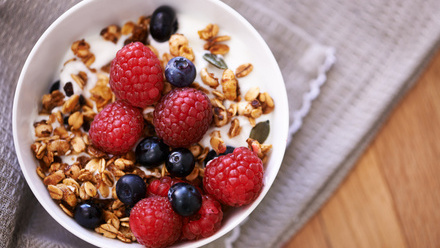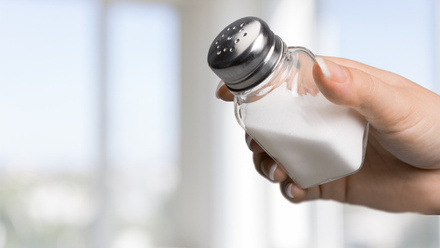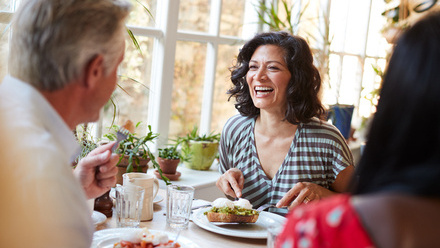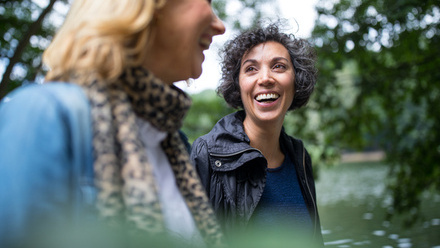Pressure injuries (previously known as pressure ulcers, pressure sores and bedsores) are injuries to the skin and underlying tissue, primarily caused by prolonged pressure on the skin. Pressure injuries often develop where bones are close to the skin such as on the lower back/spine, hips, heels and elbows.
Pressure injury can occur for a number of reasons and poor food and fluid intake may be one of those reasons.
This fact sheet focuses on how your food and fluid choices may be able to help with both prevention and treatment.
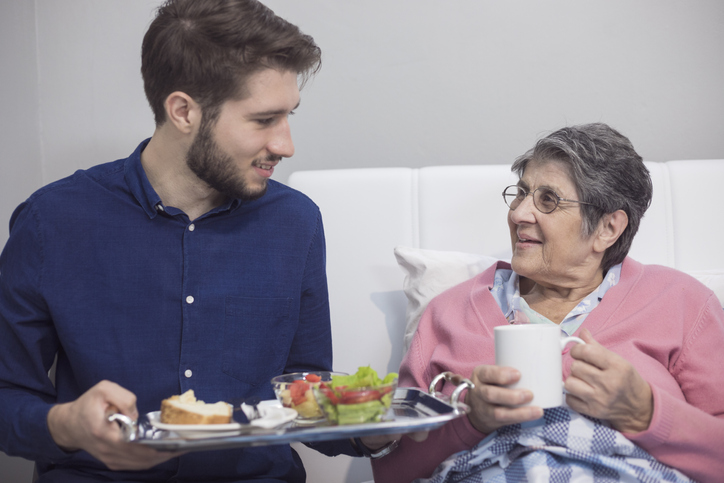
How can pressure injuries be prevented?
If you are underweight or are living with overweight, the risk of developing a pressure injury increases. Maintaining a healthy weight for you and eating a varied, balanced diet can reduce your risk of developing pressure injury and can support wound healing.
This is because:
- The skin needs a good supply of both nutrients and fluid to keep it supple and in a good condition
- Being underweight (being very thin) can mean there is less natural padding on bony areas such as the bottom and hips
- If you have lost weight without trying to you may have lost some of your body’s nutrient stores so healing may take longer
- If you are living with overweight this can reduce how mobile you are and increases the weight on pressure areas such as the bottom
How are pressure injuries treated?
Once a pressure injury has developed, nutrition and hydration play a vital role in wound healing.
At each stage of the wound healing process the body will need a balance of nutrients. This includes more protein and energy (calories) together with vitamins, minerals and fluid.
You can get a balanced intake of all these nutrients by eating a variety of foods from the following groups:
Protein sources
- Meat, fish, eggs, cheese, beans and pulses, soya products like tofu, mycoprotein like Quorn, seitan (wheat protein) and nuts. These also are often a rich source of vitamins and minerals
Try to have at least one of these foods at each meal.
Carbohydrate sources
- Rice, pasta, potatoes, naan, chapati, bread and cereals especially wholegrain varieties
Try to have at least one of these foods at each meal.
Dairy foods (or alternatives)
- Milk, cheese, yoghurt or fortified dairy-free alternatives
Aim to have one pint of milk per day or a variety of milk-based foods such as cheese or yoghurts. If you use dairy-free alternatives – one based on soya will contain a similar amount of protein to cow’s milk. Other dairy-free alternatives contain far less nutrients.
Fruit and vegetables
- Fresh, frozen and tinned - these are rich in important vitamins, minerals and fibre
Aim for five portions of a variety of types and colours every day.
Fluid and hydration
Drinking enough fluid is important to support good health and prevention and healing of a pressure injury.
Aim to drink at least 1.6 to 2 litres (this means seven to eight mugs or 11 – 14 cups) of fluid per day. All fluids count e.g. tea, coffee, milk, water, juice, and alcoholic drinks of up to 4%.
Body weight
If you are underweight or have lost weight without trying to, increasing your food intake may help with healing. The following suggestions might help:
- Ensure you have regular, balanced meals (see guidance above)
- If you find it difficult to prepare and cook meals then there are a wide variety of chilled, frozen and room temperature ‘ready meals’ available
- Try to have three small meals and two to three nourishing snacks throughout the day (such as yoghurt, cheese and biscuits, nuts)
- Try to also include nourishing drinks each day such as milk or drinks made with milk
- Adding nutrient rich ingredients to foods can also help to increase their nutrient content e.g. adding skimmed milk powder, cheese, egg or nut spread to foods can help
If you are living with overweight and have a pressure injury, you still need to eat a balanced diet so that your body continues to get all the nutrients it needs. Avoid either gaining weight or trying to lose weight during this time. The following suggestions might help you:
- Ensure you have regular, balanced meals (see guidance above)
- Choose low-fat cooking methods such as grilling, baking, microwaving or steaming
- Choose low-fat versions of foods
- Choose snacks that are lower in energy but high in protein such as higher protein yoghurt, soya yoghurt alternative, low-fat rice pudding, low-fat custard, boiled eggs, crab sticks
- Choose sugar-free hot and cold drinks
Vitamin and mineral supplements
If you are eating a full and varied diet it is unlikely that you’ll need to take an additional vitamin and mineral supplement to aid wound healing.
If you have a poor food intake or can’t manage a varied diet, you can take an “A to Z” type vitamin and mineral supplement. These are available from supermarkets, pharmacies and online.
Oral nutritional supplements (sip feeds)
If your food intake remains low and you are unable to eat enough, a healthcare professional such as a dietitian may advise you to take an oral nutritional supplement. These types of drinks are designed to supplement what you are eating and provide a rich source of energy, protein and other nutrients. They are available as either a powder to mix with milk or ready made and can be purchased or prescribed.
You should not take additional vitamin and mineral supplements if you are taking three or more oral nutritional supplements per day.
If you have diabetes
Poorly controlled diabetes can delay healing. Seek advice from your diabetes team about managing your diabetes.
Top tips
- You may have heard pressure injuries called pressure ulcers, pressure sores or bedsores in the past. They are usually caused by prolonged pressure on the skin
- Eating a balanced diet and having a healthy body weight will help to reduce the risk of developing a pressure injury
- If you have a pressure injury, eating and drinking well will help it to heal because your body will have all the nutrients it needs to enable wound healing
- Taking a vitamin and mineral supplement if you have a poor food intake or can’t manage a varied diet can be helpful
- A dietitian may advise about taking an oral nutritional supplement if you are unable to eat enough food to meet all your body’s needs
Source(s)
European Pressure Ulcer Advisory Panel, National Pressure Injury Advisory Panel and Pan Pacific Pressure Injury Alliance (2019) Prevention and Treatment of Pressure Ulcers/Injuries: Quick Reference Guide. Emily Haesler (Ed.)
Jaul, Calderon-Margerlit (2015) Systemic factors and mortality in elderly patients with pressure ulcers. International Wound Journal
Langer, G. & Fink, A 2014 Nutritional interventions for preventing and treating pressure ulcers
(Review) Cochrane Database Systematic Reviews Issue 6. Art. No.: CD003216. DOI:
10.1002/14651858.CD003216.pub2.
NHS Improvement (2018) Eat well, drink well and keep the skin well. Key nutrition and hydration messages to prevent pressure ulcers and promote wound healing
NICE 2014. Pressure ulcer: prevention and management of pressure ulcers. NICE clinical guideline 179; guidance.nice.org.uk/cg179
NICE (2020) NICE Pathway - Managing pressure ulcers in adults
Omidvari AH, Vali Y, Murray SM, Wonderling D, Rashidian A (2013) Nutritional screening for improving professional practice for patient outcomes in hospital and primary care settings (review). Cochrane Database Syst Rev 2013(6): CD005539
Posthauer ME, Banks M, Dorner B, Schols JMGA (2015) The Role of Nutrition for Pressure Ulcer Management: National Pressure Ulcer Advisory Panel, European Pressure Ulcer Advisory Panel, and Pan Pacific Pressure Injury Alliance White Paper. Advances in Skin & Wound Care The Role of Nutrition for Pressure Ulcer Management: Nationa... : Advances in Skin & Wound Care (lww.com)
Winter et al (2014) BMI and all-cause mortality in older adults: a meta-analysis . Am J Clin Nutr doi: 10.3945/ajcn.113.068122


